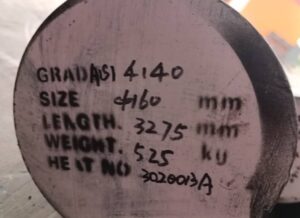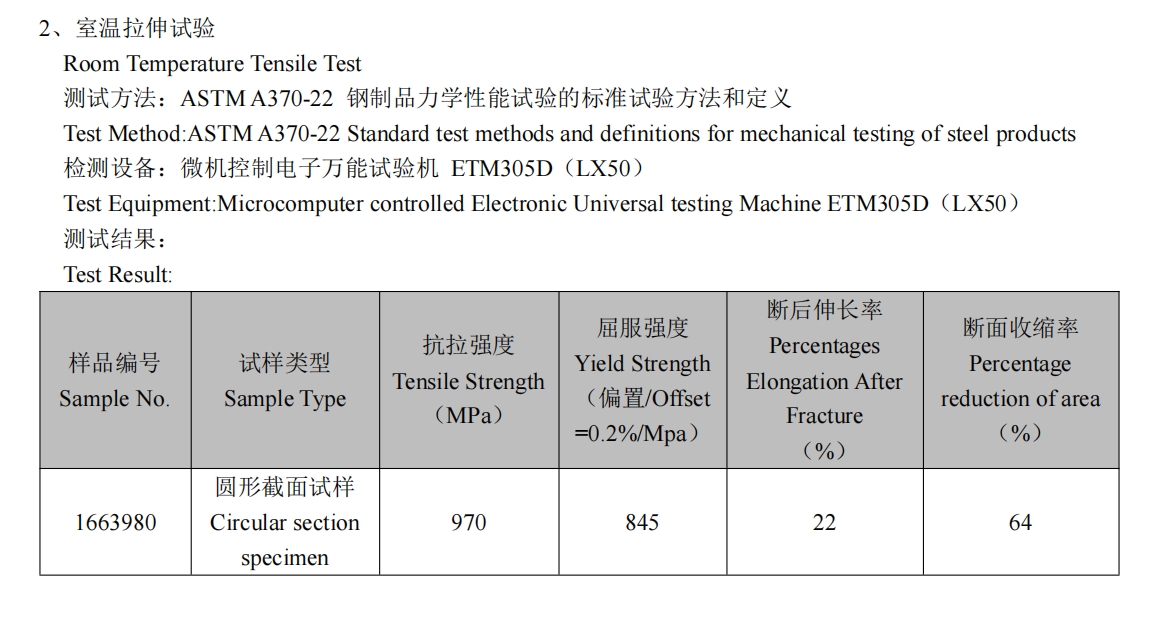aisi 4140 alloy steel metal guide: chemical, properties, application
aisi 4140 alloy steel metal guide: chemical, properties, application

Introduction
What is 4140 steel?
AISI 4140 is a low allow chromium molybdenum(CrMo) steel. AISI 4140 has higher yield and fatigue strength, better through hardening and superior impact properties compared to plain carbon steels like 1045. Typical applications include connection rods, collets, conveyor pins,gears, stem assemblies, pump shafts and tool holders.
What is 4140 Modifed?
AISI 4140 Modifed is a low alloy Chromium Molybdenum (CrMo) steel. AISI 4140 modifed is a low alloy Chromium Molybdenum (CrMo) steel similar to 4140 but with enhanced levels of chromium and molybdenum for increased hardenability.
It is typically used for down hole drilling tools such as tool joints and shock subs.
Application
Where is 4140 use?
Medium-high stressed shafts and components where the use of carbon steel 1045 would not be appropriate. Reasons for using 4140 are the higher yield and fatigue strength, better through hardening of the material and superior impact properties compared to plain carbon steels like 1045.
These advantages are only achieved when 4140 is used in the heat treated condition.Typical components include transmission shafts, spindles and small gears, threaded fasteners such as bolts, nuts and studs.
Standard
What is 4140 standard?
complies with grade AS1444 Grade 4140
ASTM A434A29)Grade 4140
Euro EN 10083 grade 42CrMo4
Material Number 1.7225/1.7227
Chemical Composition
What is 4140 chemical composition?
| Grade | C | Si | Mn | P | S | Cr | Mo |
| 4140 | 0.37-0.44 | 0.10-0.35 | 0.65-1.10 | ≤0.040 | ≤0.040 | 0.75-1.20 | 0.15-0.30 |
What are the effects of each element on 4140 steel?
Carbon (C: 0.37-0.44%):
- Primary hardening element
- Increases strength, hardness and hardenability
- Improves wear resistance
- Higher carbon content leads to better heat treatment response
Silicon (Si: 0.10-0.35%):
- Acts as a deoxidizer during steelmaking
- Improves strength and oxidation resistance
- Enhances hardenability
Manganese (Mn: 0.65-1.10%):
- Increases hardenability
- Improves strength and toughness
- Acts as a deoxidizer and desulfurizer
- Helps prevent hot shortness
Phosphorus (P: ≤0.040%):
- Kept low as an impurity
- Can increase strength slightly but may reduce ductility and toughness
- Higher levels can cause embrittlement
Sulfur (S: ≤0.040%):
- Kept low as an impurity
- Can improve machinability but reduces toughness and ductility
- Higher levels can cause hot shortness
Chromium (Cr: 0.75-1.20%):
- Increases hardenability
- Improves corrosion and oxidation resistance
- Enhances wear resistance
- Promotes carbide formation
Molybdenum (Mo: 0.15-0.30%):
- Increases hardenability
- Improves high temperature strength
- Reduces temper embrittlement
- Enhances creep resistance and toughness
Mechanical properties
What is 4140 mechanical properties?
| 4140 Steel | 80ksi Variant 1-10”(mid radial) 1-12”(1”below) |
110ksi variant 1-10”(mid radial) |
125ksi variant 1-7.5”(mid radial) |
|||
| Minimum | Maximum | Minimum | Maximum | Minimum | Maximum | |
| 0.2%Proof stress (ksi) | 80 | 110 | 125 | |||
| UTS (ksi) | 100 | 135 | 135 | |||
| %Elongation | 20 | 13 | 13 | |||
| %reduction of area | 45 | 40 | 40 | |||
| Hardness HRC | 18 | 22 | 30 | 36 | 32 | 38 |
| Hardness HBW | 217 | 237 | 285 | 341 | 301 | 352 |
| CVN @23℃(J) | 80 | 60 | ||||
Why does 4140 steel have different strength?
The 4140 steel shown has three main strength (80ksi, 110ksi, and 125ksi) because different applications require different combinations of strength and toughness. These variants are achieved through different heat treatment processes:
4140 80ksi:
- Lowest strength but highest ductility
- Elongation: 20%
- Best impact toughness (CVN @ 23°C: 80J)
- Used where higher ductility and toughness are prioritized
- Hardness: HRC 18-22
4140 110ksi:
- Medium strength level
- Balanced properties
- Elongation: 13%
- Moderate impact toughness (CVN @ 23°C: 60J)
- Hardness: HRC 30-36
4140 125ksi:
- Highest strength
- Same ductility as 110ksi variant (13% elongation)
- Lowest impact toughness (CVN @ 0°C: 25J)
- Used where high strength is the primary requirement
- Hardness: HRC 32-38
Heat treatment
What is 4140 steel heat treatment?
| Annealing | Normalising | Hardening | Quenching medium |
Tempering |
| 850℃ | 850-920°C | 850-860℃ | Oil | 500-680℃ |
4140 Hardening
Components should be heated slowly to 850 to 860°C, held until uniform, then quenched vigorously in oil (or polymer with an equivalent quench rate to between 80 to 110°C). Polymer quenchants have similar cooling capacities to oil, while having the advantage of a being less likely to ignite.
4140 Tempering
While still warm, re-heat to tempering temperature, hold one hour per 25mm of section (2 hours minimum) and cool in air. Select tempering temperatures according to the required mechanical properties (refer to tempering curve). Holding in the temperature range 230 to 370°C should be avoided due to possible temper embrittlement (“Blue Brittleness”). For yield strengths above 1380MPa: temper ½ to 2 hours at between 175 and 230°C, while for yield strengths below 1380MPa temper in the temperature range 500 to 680°C, then air cool or water quench.
Equivalent
What is 4140 equivalent to?
AFNOR 40 CD 4, AFNOR 42 CD 4 (France), ASTM A322, ASTM A331, ASTMA505,ASTM A519,ASTM A646, B.S. 708 A 42 (UK), B.S. 708 M 40 (UK), B.S. 709 M 40(UK), JIS SCM 4,JIS SCM 4, JIS SCM440,SS14 2244 (Sweden), MIL SPEC MIL-S-16974SAE J404, SAE J412,SAE J770, DIN 1.7225, UNS G41400,AMS 6381, AMS 6382, AMS6390,AMS 6395,1S 1570 40Cr1Mo28, 1S 4367 40Cr1Mo28, 1S 5517 40Cr1Mo28
Process
4140 Smelting
4140 steel is manufactured via Electric Arc Furnace, followed by Ladle Refining and Vacuum Degassing and is either cast into bottom-poured wide end up ingots, or Continually Cast.
4140 forging
4140 steel can be processed through hot rolling and forging. Hot rolled dimensions are typically below 200mm. Forged dimensions are generally above 80mm. The maximum forging size is determined by different forging equipment capabilities.
Shape
4140 round bar
4140 round bars are the most common shape, available in sizes ranging from 5mm to several hundred millimeters in diameter. Even smaller dimensions can be achieved through cold drawing process.
4140 plate and sheet
4140 plates and sheets are also commonly stocked items. The most common delivery condition is hot-rolled black surface (mill finish). Forged plates are also available but typically not kept in stock.
4140 tube and pipe
4140 tubes and pipes are more commonly found in L80 grade, which is a specification widely used in oil and gas industry. L80 grade meets the API (American Petroleum Institute) specification 5CT for casing and tubing.
Quality
Actual data

Manufacturer
Feel free to contact us for quotations and availability. Our stock is ready for immediate delivery.
Welcome to send your inquiries. We provide competitive quotes and reliable product quality.
